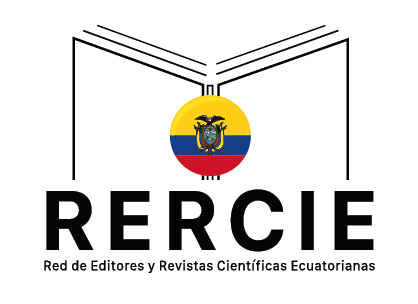Criticizing and Investigating the Theory of Royal Ring in Parthian and Sassanid Reliefs
Palabras clave:
ring of power, ring of unification, criticism, relief, parthians, sassanidResumen
There is an outstanding action displayed in a great many of the scenes of the inscriptions on the containers, seals and coins from various archaeological eras, including those of Parthians and Sassanid. The action is defined with it being given a ring which resides in various scenes and inscriptions featuring different ornamentation as well as in different individuals’ hands. The majority of the scenes depict the carrying of the ring in hands between two personalities: Ahura Mazda and the king, the goddess and the king, the queen and satrap, the queen and the king, the king and the successor and the goddess and the goddess. It is worth mentioning that the ring is only in the hand of one figure with no counterpart in some of the science. The archaeologists doing research in this regard, including Roman Ghirshman, Luis Vandenberg, Robert Hertsfeld, John Kurtis, Sayyed Rasoul Musavi, Haji Ali Akbar Sarafraz and others, have all pointed to one single subject indicating that the intended ring is a sign of granting the kingship ring, sultanate or power with the explanation being that the ring gifted from the God to the king indicates His granting of power and sultanate to the king and/or the granting of the ring by the king to the satrap is indicative of his gifting of power to satrap hence legitimizing him. The present study aims at criticizing the theory and determining the semantic and symbolic load of the ring role as well as the ring‘s different use cases in the various scenes. According to the researches done by the author in the present study, the granting of the ring with the objective of transferring the power or sultanate cannot perfectly convey the content of the inscriptions and many contradictions come about in various scenes considering such a semantic load. That is because the symbolic load of the ring is defined based on a deductive reasoning in doing so. It was concluded in an investigation of the extant inscriptions and recognition of the content of each work that the ring can be an indicator of the unification between two opposing personalities hence reflective of the unity and association in religious and political terms in such a manner that the carrying of the ring in hand between the God and the king showcases the unification between these two personalities and it can be stated that both personalities exemplify their own specific procedures. King stands for government and Ahura Mazda models religion and, considering that both these figures have taken the ring of unification in their hands, it is illustrative of the unification between the government or sultanate with religion or creed and a supernatural power. It is noteworthy that there is a defining of a special subject in every scene wherein unification has been demonstrated. This underlying subject has been classified into three sets by the author: 1) established unification; 2) unification in progress; 3) unification request. The present study introduces scenes of the inscriptions with ring of unification following which the issue will be perfectly analyzed and interpreted. The current research paper is a descriptive-analytical research that has been conducted based on library method.
Descargas
Referencias
Arthur, Christiansen, (1935), “the status of the government and the royal court in Sassanid era”, tr. Mojtaba Minavi, 1st ed., Tehran, Teachings Commission press
Malekzadeh Bayani, Shahin, “sign of splendor”, journal of historical investigations, 7(1)
Sarfaraz, Ali Akbar, (1976), “discovery of important Sassanid era reliefs in Chowgan strait as reported in the fourth annual collection of archaeological discoveries and studies in Iran”, under the supervision of Firuz Bagherzadeh, Tehran, Iran’s archaeological center
Shahpour Shahbazi, Ali Reza, (2010), “the history of Sassanids”, translation of Sassanid part from Tarikh-e-Tabari and comparing it with Tarikh-e-Bal’ami, Tehran, Amir Kabir
Kambakhshfard, Saifullah, (1995), “Kangavar’s Anahita Temple”, Tehran, Cultural Heritage Organization
Christiansen, Arthur, (2007), “Iran during Sassanids”, tr. Rashid Yasemi, Tehran, Donyay-e-Ketab
Ghirshman, Roman, “Iran’s art during Sassanids and Parthians’ eras”, tr. Bahram Farrehvashi, Tehran, scientific and cultural publication company
Luconin, Vladimire, (2005), “Sassanid Iran’s civilization”, tr. Enayatullah, Reza, 4th ed., Tehran, Scientific and cultural publication center
Mohammadifar, Ya’aghub and Amini, Farhad, (2015), “Parthian archaeology and art”, Tehran, Shapikan
Musavi Haji; Sayyed Rasoul, (1995), “a study of Sassanid reliefs”, supervisor: Gholam Ali Hatam, teacher training university, human sciences university
Vandenberg, Luis, (2000), “ancient Iran archaeology with an introduction by Roman Ghirshman”, tr. Issa Behnam, Tehran, Tehran University press
Hertsfeld, Ernst, (2002), “Iran in ancient east”, tr. Homayun San’atizadeh, Tehran, human sciences and cultural research center
Harper, Prudence, (2008), “Sassanid silver in Iran’s history”, v.3, part 2, Cambridge, supervised by Ehsan Shater Yar, tr. Hassan Anousheh, Tehran, Amir Kabir
Batist Fleix Lazar, Jean, (2012), “Mithraism secrets and days”, tr. Sayyed Hassan Asefgah, Tehran, Tahoury
Serami, Rasoul, (1994), “investigating the Sassanids’ silver containers in terms of their styles of manufacturing and ornamentation”, supervisor, Susan Bayani, advisor, Akbar Sarfaraz, Teacher Training University, Tehran
Clledge Malcom A.R.1977. Parthian Art York, Ithaca.
-Agahirshman, R, 1952, Cinq campagnes de fouilles a suse (1946-1951).Revue d assyriologie et d archeology orientale XLVI/1.
-Harper, P.O, 1979, Thrones and Enthronement Scenes in sasanian Art, Vol .17.
-Herzfeld, E., 1924, paikuli, Berlin.
Herzfeld, E., 1927, Die Malereien von Sammarra, Berlin.
Herzfeld, E., 1934, A History of Ancient East. London and New York.Oxford university Press.
-Mosavi Haji ,Seyyed Rasool, reza Mehrafarin,2009, the Lade Represented in Narseh s Relief: Shapourdokhtak or Anahita?Intl.J.Humanities,vol.16(2)
H.Seyring , “Antiquites syriennes. Sur un bas-relief de Tang –i Sarvak”,dans Syria, vol.XL VII, 1970.
R .Ghirshman .Iran .Parthes et Sassanides , 1962.
R .Ghirshman, “Terrasses Sacrees de Bard-e Nechandeh et mashid-I Solaiman”(=Memoires de la delegation Archeologique en Iran, vol. XLV) , vol.I,1976.
Shayakhmetova, D., & Chaklikova, A. (2018). Development of the intermediator of intercultural communication based on public argumentative speech. Opción, 34(85-2), 149-185.
Courtney, S. A. (2018). Teacher Educator-Embedded Professional Learning Model. International Electronic Journal of Mathematics Education, 13(3), 103-123. https://doi.org/10.12973/iejme/2702















